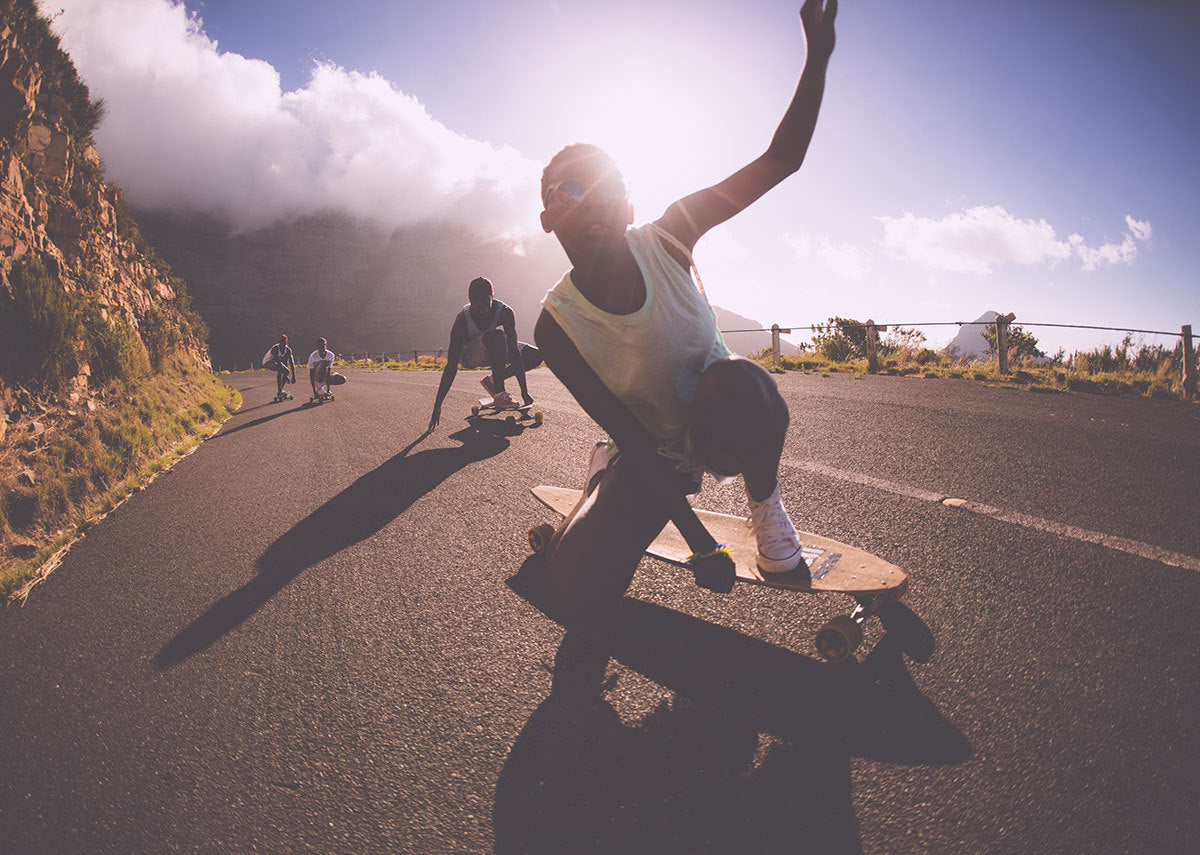Carveboarding: What do you need to know?
| Nov 02 , 2020
Carveboarding, also known as surf skateboarding, is rapidly growing in popularity. Bigger than a normal skateboard, shorter than a surfboard, some people think it is the closest thing to surfing you can do on dry land.
Surf skating or carveboarding is a really appealing sport for people who are new to skateboarding, seasoned skateboarders or even surfers. If you’re one of those people who are curious about what carveboards are and what they allow you to do - or if you’re already sold on the idea but are not sure where to start, then read on.
By the end of this article, you will understand exactly who surf skateboards are for, what kind of riding style you will need to use them and what skills and techniques you will need to master.
What is a Carveboard?
Carveboards first appeared in the late 90s and were designed to mimic the dynamic motion you get when you ride a wave on a surfboard.
They are known as a special kind of skateboard as they are shorter and wider than usual with smaller wheels. Some people, however, argue that they are actually a special type of longboard as they can be as long as 40 inches.
Whatever your view, the real difference between carveboards, skateboards and longboards is seen in their special moving front truck. Trucks usually only turn along their kingpin axis but on carveboards, there is an extra axis of rotation which allows the board to gyrate in an additional plane.
The best way to understand this is to check out this video by Waterborne:
The truck on a carveboard allows the nose of the board to shift left and right as the rider shifts their weight and so enables them to make more dramatic transitions from rail to rail. The board can also turn more dramatically due to the large amount of movement in the nose, while the rear truck acts as the pivot point for the board to rotate around.
Who are Carveboards aimed at?
Carveboards can be used by anyone, but the advantages for surfers, longboard skaters and new skaters are outlined below:
If you are a surfer then carveboards can help you to improve your surfing skills on land - after all, this is what they were originally designed for. In fact, many surf schools use carveboards to help new surfers to master difficult surfing manoeuvres, so that they can grasp them on land rather than out in the water. Carveboards are a great tool for learning as the body movement involved in riding them is much closer to surfing than a normal skateboard.
If you are a longboard or skateboard enthusiast then you will be aware that there are many different riding styles you can use, from downhill to freestyle. Carving is one way of riding which involves performing continuous flowing turns, leveraging any small incline in order to keep going. Pumping is another way of riding which involves deep body weight shifts to transfer energy and speed into the board without having to ride downhill or push with your foot. Both of these ways of riding would benefit from the use of a carveboard - although they are not the best choice for long-distance riding because of their extreme looseness.
If you have never ridden a skateboard before (and why not?) then you will need to think about a few things before opting for a carveboard as your first board. Carveboards are not as stable and easy to start on as classic skateboards or drop-down longboards, although it will allow you to make tight turns in a limited space. Good to know if you are going to be starting off on your driveway or in a small backyard.
How to ride a Carveboard
The name carver board gives you a clue as to the best way to ride them - they are designed for carving tight turns and pumping. The swivelling front truck allows for short tight turns to be carved, allowing you to easily slalom around obstacles and easily turn tight corners.
The front truck also allows you to propel your board and pick up speed by pumping, i.e. doing rail-to-rail shifts. You can even pump uphill from a still position with a carveboard - something that is practically impossible to do with a longboard.
Hopefully, this brief overview of the carveboarding landscape has helped get a clear idea of what it is, who it is for and how to ride.
If you decide to have a go at carveboarding please share your achievements with us on our booicorestore Instagram using the hashtag #outdoorsmadeeasy. We may even share it if you are wearing your booicore gear!

